9 years and 50 issues of ENDURO magazine – the perfect occasion for us to take a look back at the big trends, flops and milestones that have shaped the last decade and to see what the future holds for us bikers! We tell you what you can expect in the bike world over the next 10 years and what will probably never change. Curtain up for the most exciting (tech) trends and future visions!
Can you imagine hitting the trails of Finale Ligure on a 26” bike with a 67° head angle, 3x crankset and 390mm reach, all crammed into a size L frame? Probably not. “Unrideable.” would be the unanimous verdict of todays’ tech-savvy bike scene. And yet, there was a time when it was perfectly normal! For us too – just over 10 years ago, we rolled up our sleeves and went on a pilgrimage to what has become a mountain biking mecca to test bikes for our very first issue.

1. There’s always a first time!
First times are special. They show us something new, can shape us and teach us something. When we founded ENDURO magazine in 2012, both we and the sport had already had a few first-times behind us. We had gained experience in the most exciting enduro races of the time but, above all, had had crazy amounts of fun with the then emerging discipline. Today, we can proudly say that we were there from day one and were able to experience and help shape the development of this wonderful sport and lifestyle. 2012, one year before the first Enduro World Series was held in Punta Ala, Italy. It was also two years before enduro mountain biking really started booming. Enduro became a movement and changed mountain biking like nothing had before, and it continues to do so today. That’s exactly the beauty of it, because it continually offers the opportunity to experience a first time together.

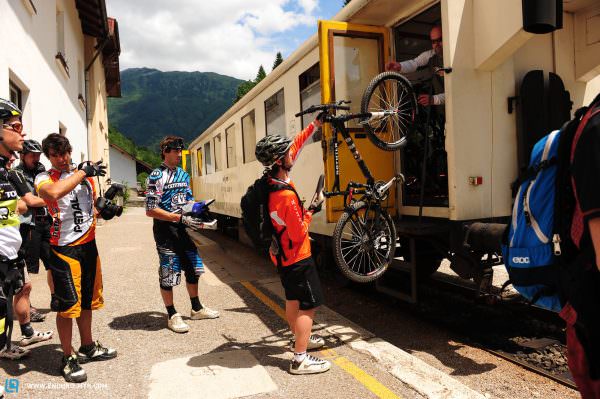

2. A brief history of enduro: How enduro changed the bike world
Stephen Hawking and Yuval Noah Harari, both of whom know a thing or two about short stories, would agree: historical facts are meaningless without context and viewed abstractly. That’s why we are going to highlight the most important technical developments and milestones of enduro mountain biking and examine the effects they had both on our sport and the industry. In Carl Sagan’s words, “You have to know the past to understand the present.”
“Why is it suddenly called enduro? Isn’t it what we’ve always done?” Although the early years of enduro were filled with enthusiasm and support from most of the mountain biking community, a few haters and sceptics couldn’t see beyond their keyboards, let alone recognise the magnitude of the movement and innovations it was bringing with it. Funnily enough, you can still hear and read almost exactly the same comments and arguments today, only that modern-day haters bash on gravel bikes instead. We understand why. In the early days of enduro and gravel, the special and fascinating part wasn’t the technology, but the mindset. Unfortunately, that’s something you have to experience yourself to understand. Trying to comprehend a movement on a technical rather than an emotional level is pointless, and also a little bit sad. It’s like love: you can talk and philosophise about it all you want but if you’ve never experienced true love, talking about it isn’t going to get you anywhere!


Enduro has fundamentally changed mountain biking, bringing together many different people from the most diverse backgrounds. Back in 2012, the mountain bike world was still divided into camps, making it hard to believe that riders from all backgrounds, from XC to DH and four-cross, would soon be racing in the same format. The idea of having fun on the trail with other people and building new friendships through an informal yet varied and exciting racing format made enduro all the more exciting. Exploring new regions and experiencing their cultures and specialties, was the icing on the cake or, for many, the real reason for riding bikes! Driven by an inherent sense of idealism and sharing the same love for detail, early-day enduro warriors travelled the world on tiny budgets but plenty of pioneering spirit, celebrating the true spirit of the emerging community. The founding years of enduro could be described as the “Woodstock of mountain biking”, a party of mud, sweat and gears that lasted several years. Racing and lifestyle went hand in hand. However, living on love and fresh air isn’t sustainable in the long run and soon enough the industry recognised the potential of our sport. As a result, budgets started growing and racing became more commercialised. Then things got serious: bike manufacturers and teams rolled up their sleeves and beer-laden food orgies on the night before the race were replaced with healthy diet plans, isotonic drinks, strict training plans, a few doping scandals, full-face helmets and, of course, the odd shortcut! Marginal gains started to take over the hedonistic spirit of enduro as it became a high-performance sport. Coincidentally, that’s also when we started focusing less on racing here at ENDURO, gradually shifting from ”fast times” to ”good times” and embracing the fun-side of mountain biking. Of course, this doesn’t mean that we didn’t zip-tie a race number to our handlebars from time to time, and still do to this day!
Instead of focusing on race reports, we wanted to build a platform that would support the ever-growing global bike community and address the real needs of its members. It was our aim to inspire, educate and help shape the future of the scene and the products created for it. It was therefore essential for us to answer our readers’ the most important questions while simultaneously helping them solve the most critical problems. Needless to say, this also meant questioning numerous technical developments.

Nor does it mean that we didn’t like the way the racing scene was evolving. Pushing limits is always good, and racing will always keep pushing them. That’s one of the reasons why products are constantly evolving and the bikes from back then have become the rad machines we’re riding today, albeit via several intermediate steps. But racing to the bitter end wasn’t our priority anymore. Instead, enduro became a way of life and continues to be so to this day. It’s a new state of mind that breaks free from the readout of a stop watch and is as diverse as enduro bikes themselves. You can do everything but you don’t have to. And if you do, you should have a great time in the process and approach each ride with an adventuring spirit.
3. Technological overkill?
Who needs disc brakes? What are the advantages of full suspension bikes? And why should I run a dropper post on my bike when I can just lower the saddle using a quick release seat clamp? Incredibly, just 10 to 15 years ago, these were some of the most hotly-debated topics in the mountain biking world. However, the debate didn’t end there and got even more heated. Over the past ten years, the bike industry has been overzealous in its push toward new technologies, materials and approaches. Manufacturers started to tinker and experiment, launching new products at a seemingly ever-accelerating rate and making established ones obsolete before they had the chance to show any signs of age More often than not, this wasn’t financially sustainable nor beneficial in terms of communication i.e. consumer clarity and orientation. Too often in the past decade, consumers, retailers and the entire scene have been overwhelmed by increasingly short product life cycles, numerous alleged innovations and far too many standards, to the extent that there weren’t really any standards left at all!
The reasons for these short product cycles were complex. For example, component brands play a much greater role in the cycling industry than they do in the automotive sector and can be a decisive factor for bike purchases. For precisely this reason, component manufacturers began to spring up like mushrooms, doing exactly what bike manufacturers did: launching new products as if there were no tomorrow. Needless to say, this increased the pressure to innovate, or at least seem to. In addition, the advent of major technical milestones forced many manufacturers to update perfectly good products and to come up with new solutions in the shortest time possible so as not to lose relevance.



There has been a lot to talk and discussion over the past few years: plus tires, 26″, 650B or 29″? 1x or 2x drivetrains? Boost or Superboost? ebikes or analogue bikes? Light, all-rounder or power eMTB? Enduro, trail, all-mountain, over-mountain, tourer, downcountry – the original mountain bike lost itself in many sub-categories, some of them real others just marketing. Which bike categories do we really need? How much travel? Which specs and components suit which markets? Carbon or aluminum? Air or coil shock? Just as exciting is the debate about different geometry concepts – how long, slack and low can you go and how much is too much?
4. Finding the right balance.
Given the pace of development and the countless technical innovations at their disposal, brands were faced with a huge dilemma: they could either pick a new trend and hope that they bet on the right horse, or expand their portfolio to such an extent that they would dilute their vision and cut into their profit margins – because every new bike model requires development which involves additional costs for production, storage, spare-part supply, servicing and, of course, marketing.
Here’s the good news: while in the past it wasn’t uncommon to use deceitful and overzealous marketing claims to try and dominate the innovation race, now, a more holistic and differentiated understanding is starting to win out in our industry. More and more riders are starting to understand that the performance of a bike doesn’t depend on the quality of individual components but on a coherent overall concept.

It’s like football: a team made up of the world’s best players isn’t necessarily the best team in the world, because in team sports, success is based on the harmonious interaction between individual players. That might be quite hard to achieve when you put eleven massive egos on a field. Applying the same principle to bikes, great components and a good frame don’t necessarily make a great bike, and vice versa. Instead, it’s about choosing the right frame and components to create a coherent overall concept.
Unfortunately, more is often too much. Lighter and stiffer is all well and good but can be counterproductive if pushed too far. Even our skinny-wheeled brothers and sisters have understood this and have since been searching for new ways to increase compliance. In the mountain bike sector, the Fox 38 and RockShox ZEB forks are great examples: everyone wants them because they’re the hottest new shit! However, lighter and less aggressive riders who exert considerably less force on a bike won’t benefit from their increased torsional stiffness. On the contrary, while using the same components as the EWS pros may be an effective way to soothe your ego, it doesn’t do your body any favors. In a nutshell, stiffer forks lead to arm pump and fatigue more quickly and generate less traction than their skinnier, more compliant counterparts. The same applies to wheels, handlebars and many other components.
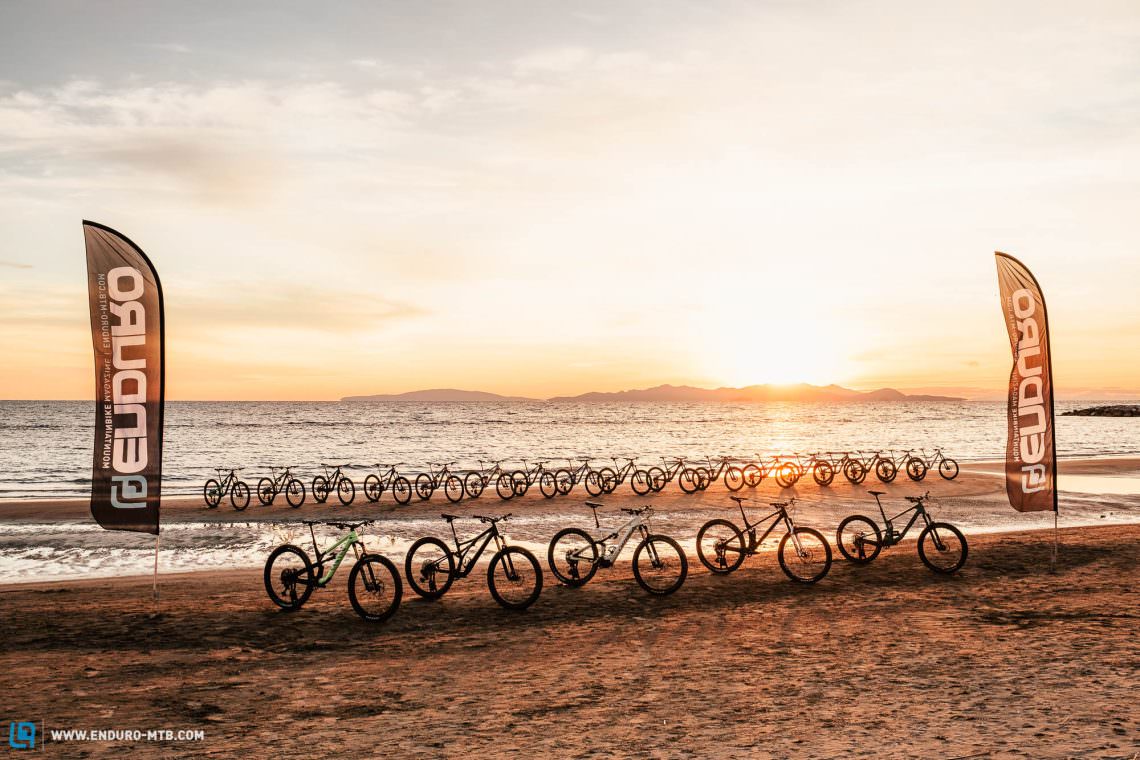
It is precisely when it comes to such questions that we want to provide orientation. That’s why we set new standards with our group tests and buyer’s guides and have developed our own holistic test philosophy over the years, helping readers around the globe make the right buying decisions and as well as the industry develop better bikes. Because ultimately, technical features are only as good as the real-world benefit they can provide on the trail! Both our 2021 mountain bike group test and current enduro bike group test have clearly demonstrated that it’s not the amount of travel that matters but the interaction between the suspension kinematics and the shock fitted. In some cases, bikes with less travel have been significantly more capable than others with more travel. Technological overkill is also a recurring issue with frame geometry and eMTB battery capacities, which have gone to extremes over the past few years but are now beginning to settle in at a more sensible level. Nonetheless, this isn’t to say that extreme approaches are pointless or shouldn’t exist.
5. From Tension to Extension
Not only have the bikes developed radically over the past few years but so have our habits, the way we ride, the places we go to and the people we love to share our passion with. In many countries, cycling has evolved from a niche to the number one trend, becoming more popular than most traditional sports. This changes the scene and the industry and can also create friction. But that’s perfectly alright! New players, purists and innovators engage in wars over ideological worldviews and new problems arise in areas which, until recently, were deemed safe, but exactly this, the changes, pressure and conflicts challenge us to find new solutions. Progression is extension. And extension requires tension to get started. So the question is, who has the stamina, persistence, power and balls to rise to the next level? The interview our sister magazine GRAN FONDO did with Canyon’s new CEO Winni Rapp, former CEO of a large telecommunications group, provides some very interesting insights.
6. Agenda 2032: The mega trends
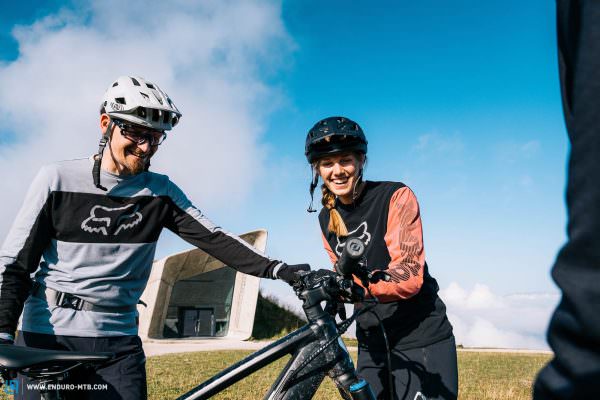

The future is rarely a coincidence but a development, and every development manifests itself in the present. Here at ENDURO, we’re well known for recognising potential and trends early and helping to shape them. Below, we present a selection of key topics that will be discussed extensively in the near future and help shape the bike world over the next 10 years.
Growth
Mountain biking has gone mainstream. This offers many opportunities but also presents some challenges. It’s perfectly understandable why some life-long mountain bikers feel bitter these days: after all, the niche sport which has been part of their identity for years is slowly turning mainstream. However, claiming sovereignty over a trail, like some insufferable surfers do with their favourite spots, isn’t cool at all. Resisting change and denying what’s happening around you makes little sense, even less so when you use your ego(ism) to divide instead of promoting togetherness in the forest. Yes, we may have been outlaws at some point, building like crazy in the forest and making our own rules. However, inconsiderate or non-cooperative behavior is no longer acceptable (this includes reckless KOM hunters on Strava), not least because the number of forest users has grown exponentially over the past years. And no, the fact that we were there before everyone else doesn’t give us the right to behave as if the forest is ours. It’s only in cooperation that the countless trail associations and initiatives that are emerging to help legalise trails can be supported. Luckily, making newcomers feel welcome and introducing them to the growing community is becoming common practice. But doing it once is not enough, which is why we urgently need to encourage a perpetual “onboarding” program to communicate and mediate within our local community. Without a doubt, this will turn biking into a great party!
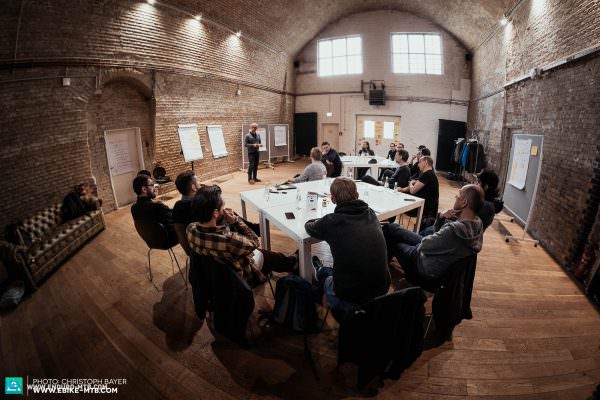

Sustainable trail fun
Sustainability will be one of the mega trends of the next decade and beyond. But be aware! With all the greenwashing and window-dressing we’re currently witnessing, it’s hard to understand which solutions are truly sustainable. The truth is that a successful sustainability strategy calls for a holistic approach that takes into account all aspects of the life cycle of a product – from production to consumer behaviour, lifespan and recycling. Unfortunately, most brands are still miles away from that. However, the responsibility is also ours as consumers. While most still prefer buying cheap and twice, it’s much more sensible to buy good-quality products once and maintain, repair and service them. While the consumerist throw-away mentality is anchored too deeply in our society to go away overnight, with the right attitude it eventually will! The good news: we can already look forward to new manufacturing processes that are far more sustainable in technological, economic and ecological terms. In the urban sector, Frankfurt-based tech company Advanced is initiating a revolution, producing their frames with a composite injection moulding process. Unfortunately, we don’t yet know whether the same production process is suitable for the production of mountain bike frames.
As our plea for increased durability and longevity article in this issue shows, there’s a lot we can achieve even without new manufacturing processes and innovations, for example, by encouraging the industry to establish new development targets and standards that favour durability over maximum performance. “Built to last” was a hit in 2007 but could also be the mantra for all development departments over the next century! Improved durability would also help decongestion overflowing workshops and solve many service problems that manufacturers are experiencing.
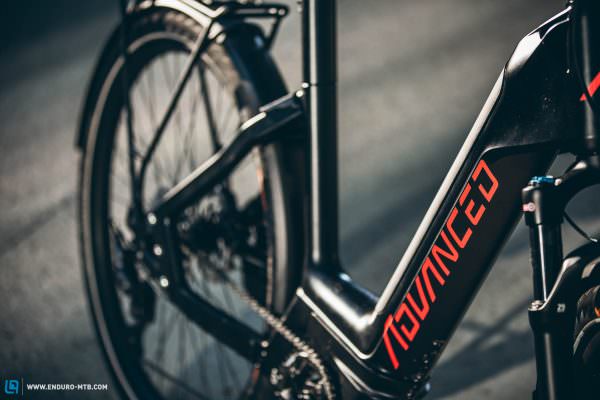

Biking = big business?
The course is currently being set for the next decade. The industry is facing major challenges due to the bike boom and current bottlenecks in the supply chain. Some bike brands are no longer liquid and have been put up for sale: mergers, conglomerates and strategic alliances are the latest in a series of last-ditch attempts to overcome these challenges, or simply to survive. In addition, investors and corporations are showing an ever-increasing interest in our industry as well as its media segment, like our Canadian friends at Pinkbike prove in this article. It’s all about market share and position. Only time will tell whether all this makes sense for the bike scene. The truth is that things are already changing and some manufacturers are on the right track: new jobs are being created, new specialised expertise is required and substantial changes in work organisation are being made. However, with expansion come new challenges and many manufacturers require new structures and processes to enable smooth scaling and adapt to the new requirements. Issues and problems that initially appear to affect only corporate structure are likely to have a mid-term impact on a brand’s product portfolio, service quality and their ability to trade. Because, even before the big bike boom, which was boosted even further by Corona, many companies laid the strategic pillars of their business on very shaky foundations. Now we’re all footing the bill: higher production and transportation costs, large-scale investments required in the future and limited capacities – bikes are getting more expensive! While this may be a laborious and time-consuming affair in the short term, it’s crucial in the medium term. Complexity is increasing significantly and with it the requirements and demands on manufacturers. One reason for this is the progressive electrification of bicycles. We’re not talking only about ebikes but electronic components such as suspension, drivetrains, dropper posts and connectivity in general.


The electrification of the bike world
EMTBing or mountain biking is no longer a battle between world views. On the contrary, many mountain bikers are considering buying an eMTB next. Whether you like it or not, electrification is advancing rapidly. According to the Zweirad-Industrie-Verband, Germany’s bike industry association, around 80% of the 736,200 mountain bikes sold in 2020 in Germany were equipped with an electric motor. The trend is clear: eMTBs are taking on a central role for leisure and our sister magazine E-MOUNTAINBIKE provides sufficient evidence to support this claim. In this respect, here at ENDURO we have no particular interest in pushing electrification. Let’s say that we’re neither in favour nor against electrification and just want to create and publish the content most relevant to you, which might sometimes also mean reporting about the latest and most exciting eMTB models. As far as we can predict, most bikes will have a motor in the next few years, at least outside traditional racing formats. The reasons are obvious: Light eMTBs like the Orbea Rise are getting better and better, combining the best of both worlds and offering excellent handling and prolonged trail fun. Sporty and playful riders won’t walk away empty-handed either and anyone who has tried the latest generation of eMTBs knows what we’re talking about. With electrification, bike categories are sinking into oblivion, with assistive technologies like electronic suspension and drivetrains hugely expanding the range of applications of bikes. The best example for this are enduro bikes like the YT Capra which, per se, is an average climber, but thanks to the RockShox Flight Attendant suspension system becomes the ultimate climbing machine that is also capable of delivering excellent performance downhill.
And yet, despite all the euphoria about the potential and possibilities of electrification, we shouldn’t forget why we ride bikes and what emotions we expect them to spark in our soul. Biking has never been about the technology itself but about the value it adds to the experience. A bike has to satisfy emotional requirements and these are often more important than the actual performance of the bike. Remember, many of us aren’t interested in gimmicks and just want to switch off and experience nature in the simplest and most genuine way possible. The art lies in developing intuitive products that can be customised for different requirements and applications.
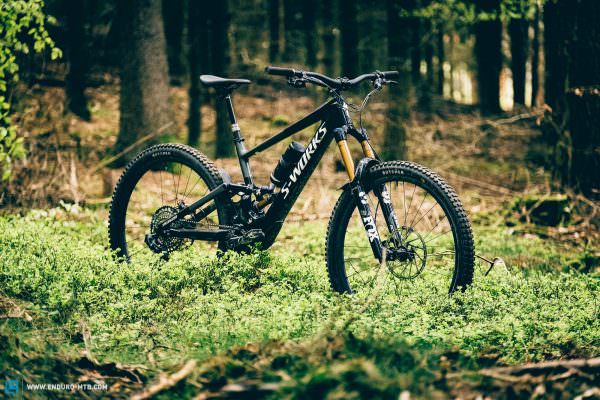

Where are we going to be in 10 years time?
In a complex, fast-paced world, strong visions help us cope with change, create added value and make the bike world a better place – for everyone! If we don’t think critically and just buy into trends, we’ll never find peace or make a real difference. We don’t have to keep reinventing the (bike) wheel either. By continuously solving problems and satisfying differing needs, we can go a long way. If you solve just one simple problem in your life every day, you’ll be worlds ahead within a few weeks! It’s no different with biking. What are your biggest issues with the current biking scene? In 10 years time, they could be a thing of the past. And finally, what does the future of cycling look like in your head? Take part in our survey to give us even more exciting input for the future!
What do you want for the future of mountain biking?
By defining our wishes, setting goals and working towards them, we can create a little more of the future we’d love to live in. However, this requires us to pave the way for the next generation, giving young riders the opportunities we didn’t have in the past and listening to what they have to say. And yes, biking will undoubtedly become faster, higher, better, safer… but hopefully, one thing will never change: riding through a forest on two wheels with a big grin on your face! Alright, unless Star Wars’ speeder bike becomes reality one day. In that case, we’ll fly over the trails.
Did you enjoy this article? If so, we would be stoked if you decide to support us with a monthly contribution. By becoming a supporter of ENDURO, you will help secure a sustainable future for high-quality mountain bike journalism. Click here to learn more.
Words: Robin Schmitt Photos: various









